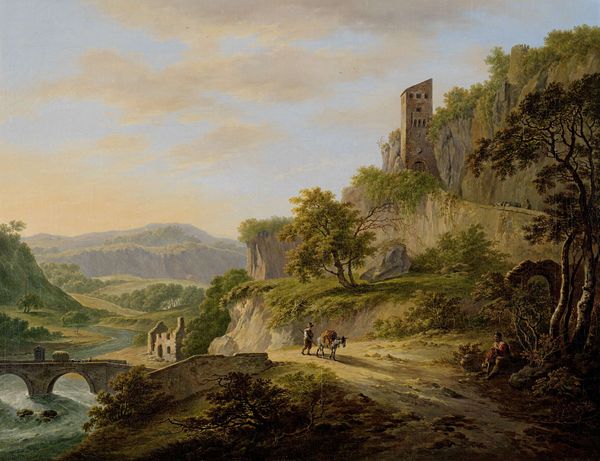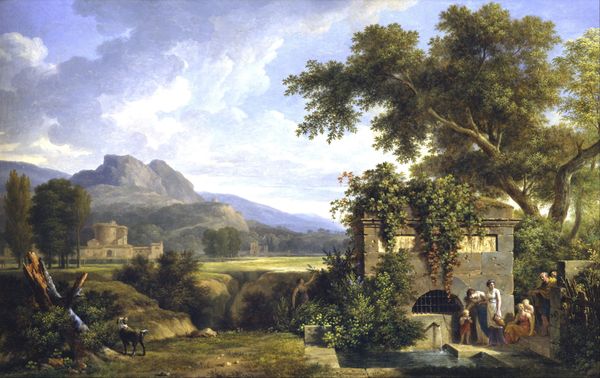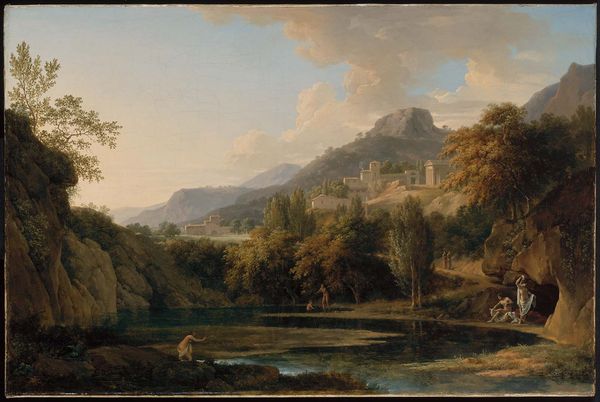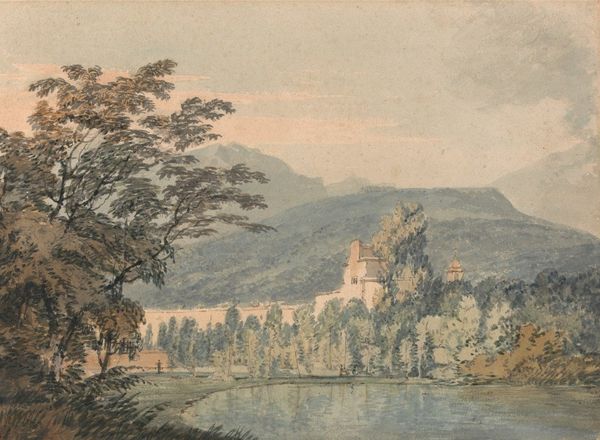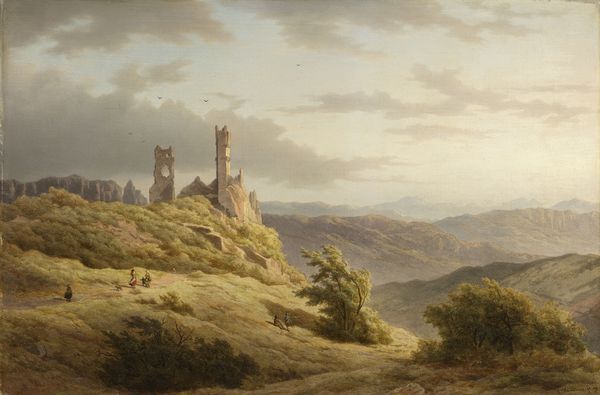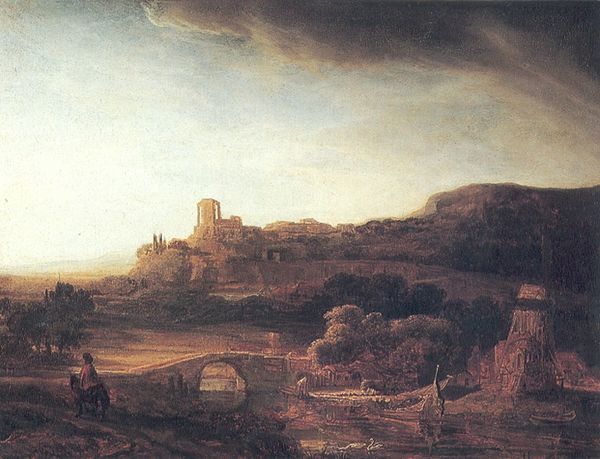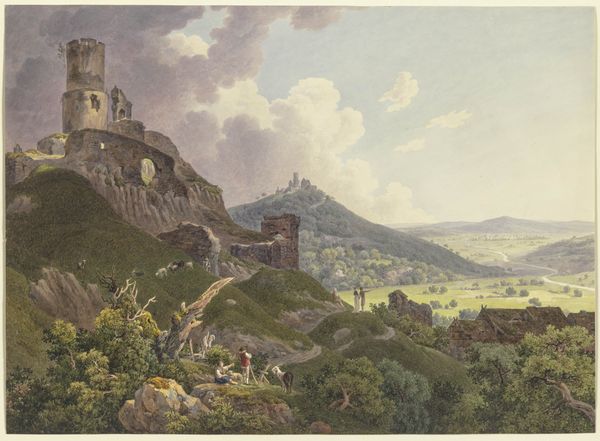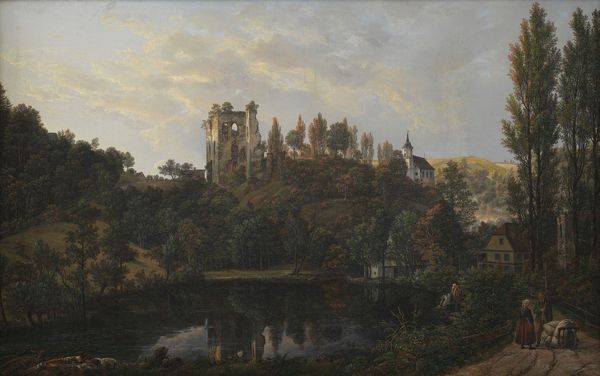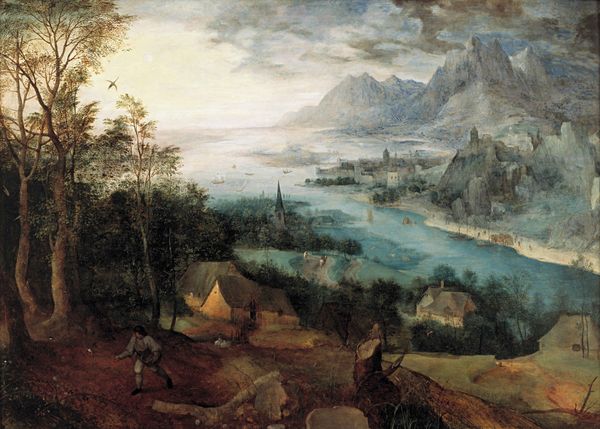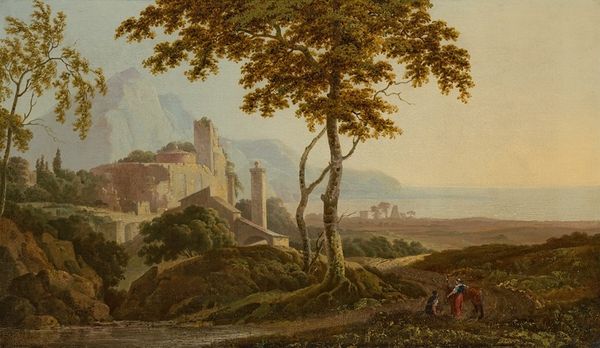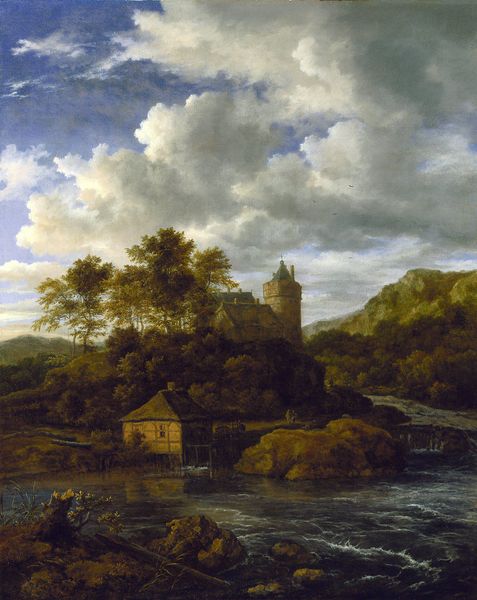
tempera, painting, oil-paint
#
tree
#
cliff
#
tempera
#
painting
#
oil-paint
#
landscape
#
oil painting
#
rock
#
forest
#
romanticism
#
natural-landscape
#
cityscape
#
mixed medium
#
mixed media
#
watercolor
Copyright: Public domain
Editor: This is Karl Bodmer's "Stolzenfels Castle, in the background Lahneck Castle," created in 1836, using tempera and oil paint. I find the overall effect quite romantic, almost dreamlike. What are your thoughts? How do you interpret this work, especially considering its historical context? Curator: It's important to consider this work within the context of 19th-century Romanticism and its fascination with ruins. Bodmer isn't simply painting a landscape; he's presenting a commentary on history, power, and the passage of time. These castles, particularly in their ruined state, represented a bygone era of feudal power. What do you notice about the people included in the image? Editor: They seem quite small and insignificant compared to the scale of the landscape and the castles themselves. Almost like an afterthought. Curator: Precisely. The people serve to highlight the grandeur and longevity of the natural and architectural forms, emphasizing human transience against the backdrop of enduring history. Moreover, the act of depicting these castles helps shape a narrative around German national identity. Did castles carry any political relevance in 1836? Editor: Well, I'd imagine there was something significant about preserving the heritage when Germany was still forming its national identity? Curator: Yes. This interest in national heritage played a role in consolidating a sense of shared culture, where even ruins had public and political use. It’s about constructing a visual narrative that supports ideas of national identity and shared history. What did you think of how painting techniques are used to convey the image’s mood and convey meaning? Editor: That makes sense, looking at it that way, the atmospheric perspective and the soft rendering definitely add to the romanticized and nostalgic feel. I didn’t realize how intertwined landscape painting could be with political agendas. Curator: Art often operates within networks of power and ideologies. Hopefully this dialogue offered an appreciation of how we might decode art through historical lenses.
Comments
No comments
Be the first to comment and join the conversation on the ultimate creative platform.
